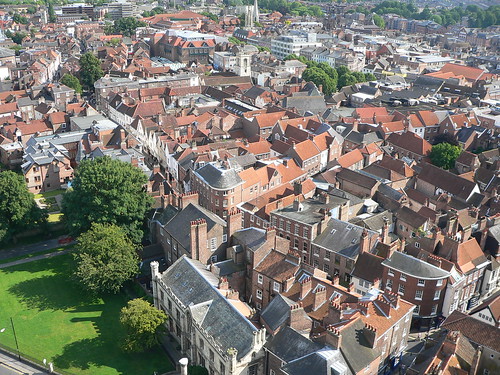Around 80 gladiators have been discovered in what experts are calling the world’s only well-preserved gladiator cemetery, in the northern British town of York. The grisly find, made ahead of modern building works since 2004, includes the skeletons of men who had been killed with swords, axes and hammers – and one who had been bitten by a tiger.
Other telltale signs the 1st-3rd century AD men were gladiators are their arm asymmetry, testament to years of training with heavy weapons, and seemingly ritual decapitation. Though most losing gladiators were killed by a stab to the throat, the practice may have been due to some prevailing local custom. Burial items are sparse, but one 18-23-year-old man had been laid to rest with the remains of four horses and pig and cow bones.
Archaeologist Kurt Hunter-Mann of the York Archaeological Trust believes the dig’s evidence is pointing in one direction. “At present our lead theory is that many of these skeletons are those of Roman gladiators,” he says. “So far there are a number of pieces of evidence which point towards that interpretation or are consistent with it. But the research is continuing and we must therefore keep an open mind.
“We could see that in quite a few cases the skulls had been chopped with some kind of heavy bladed weapon, a sword or in one or two cases an axe,” Hunter-Mann adds. “But they were buried with a degree of care. There are no mass pits. Most of them are buried individually.
“Other important pieces of evidence include a high incidence of substantial arm asymmetry – a feature mentioned in ancient Roman literature in connection with a gladiator; some healed and unhealed weapon injuries; possible hammer blows to the head – a feature attested as a probable gladiatorial coup de grace at another gladiator cemetery, Ephesus, in Turkey.”
 Forensic anthropology expert Dr Michael Wysocki claims the most striking evidence is a series of bite marks suffered by one of the men. “The presence of bite marks is one of the strongest pieces of evidence suggesting an arena connection. It would seem highly unlikely this individual was attacked by a tiger as he was walking home from the pub in York 2,000 years ago.”
Forensic anthropology expert Dr Michael Wysocki claims the most striking evidence is a series of bite marks suffered by one of the men. “The presence of bite marks is one of the strongest pieces of evidence suggesting an arena connection. It would seem highly unlikely this individual was attacked by a tiger as he was walking home from the pub in York 2,000 years ago.”
The find will fuel speculation as to the location of York’s Roman amphitheatre. Gladiator arenas have been discovered in several other major Roman cities in Britain such as London and Chester (watch a video on London’s Roman amphitheatre here). York, named Eboracum, was established by the Romans in 71AD, and boasts Roman baths and walls. Experts speculate it was once an upper-class Roman residence, and it is also home to the popular Jorvik Viking Centre. But Dr Wysocki believes this could be York’s biggest ancient coup to date: “These are internationally important discoveries. We dont have any other potential gladiator cemeteries with this level of preservation anywhere else in the world.”
The discovery will feature in forthcoming Channel 4 documentary Gladiators: Back from the Dead, which airs in the UK next Monday (14 June).
